Open Call Materia Abierta 2021
Ni apocalipsis ni paraÃso: Meditaciones en el umbral
Materia Abierta is a summer school on theory, art, and technology based in Mexico City. Conceived as a space to reflect on the ethics of the present and future, the program aims to interrogate the political, economic, and ideological forces that condition contemporary cultural production and to favor other forms of action and knowledge.

14.1
The myco-architecture project out of NASA's Ames Research Center is prototyping technologies that could "grow" habitats on the Moon, Mars and beyond out of fungi, specifically, the unseen underground threads that make up the main part of the fungus, known as mycelia. Pictured here, a stool constructed out of mycelia after two weeks of growth. The next step is a baking process that leads to a clean and functional piece of furniture. The myco-architecture project seeks to design not only for habitats, but for the furniture that could be grown inside them as well.

14.1
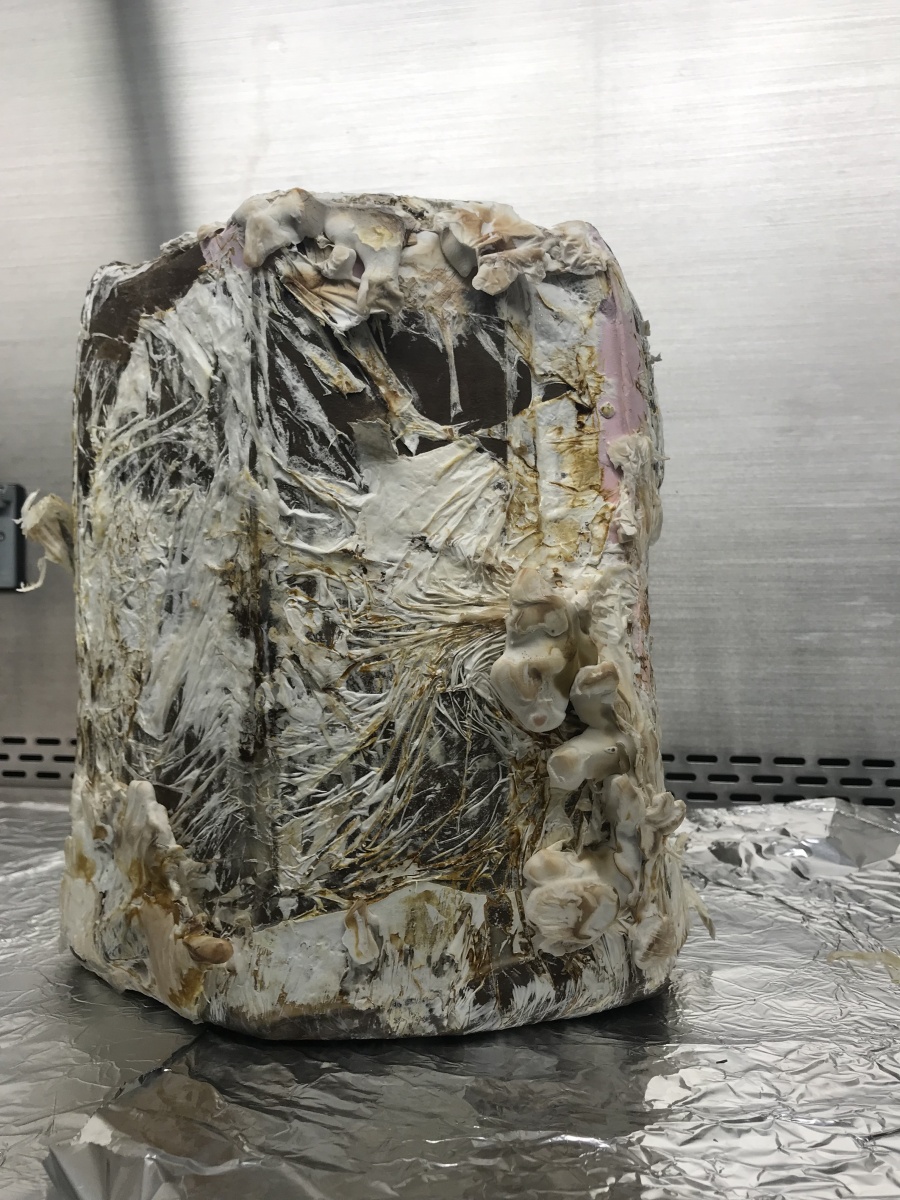
14.2
The myco-architecture project out of NASA's Ames Research Center is prototyping technologies that could "grow" habitats on the Moon, Mars and beyond out of fungi, specifically, the unseen underground threads that make up the main part of the fungus, known as mycelia. Pictured here, a stool constructed out of mycelia after two weeks of growth. The next step is a baking process that leads to a clean and functional piece of furniture. The myco-architecture project seeks to design not only for habitats, but for the furniture that could be grown inside them as well.

14.2
Summer 2021
Given the measures necessary to prevent the spread of COVID-19, this year's program will take place virtually. Thanks to the financial support of the institutions and organizations allied to the program, this edition will be free of charge for the group of selected participants.
Materia Abierta is a prototype of itself. It is reconfigured each year, responding to relevant themes and exercising different educational formats. The 2021 program will explore the need to develop new spaces for learning as rearrangements of traditional educational models. It will take advantage of digital platforms' ability to access broader audiences as it seeks to generate intimate and communal experiences within virtual environments. This, while also considering critically the political and economic mechanisms that benefit from digital presence and productivity.

5.1
It is presumed that humans began gathering mushrooms for food in prehistoric times. In ancient civilizations such as the Greek, Roman, and Hindu, mushrooms were considered sacred foods. And based on data in the work of Fray Bernardino de Sahagún and fragments of the Popol Vuh and Chilam Balam, it is also believed that in pre-Hispanic Mesoamerican cultures, mushrooms acquired a high rank and came to be considered the food of gods and kings.

5.1

5.2
It is presumed that humans began gathering mushrooms for food in prehistoric times. In ancient civilizations such as the Greek, Roman, and Hindu, mushrooms were considered sacred foods. And based on data in the work of Fray Bernardino de Sahagún and fragments of the Popol Vuh and Chilam Balam, it is also believed that in pre-Hispanic Mesoamerican cultures, mushrooms acquired a high rank and came to be considered the food of gods and kings.

5.2

5.3
It is presumed that humans began gathering mushrooms for food in prehistoric times. In ancient civilizations such as the Greek, Roman, and Hindu, mushrooms were considered sacred foods. And based on data in the work of Fray Bernardino de Sahagún and fragments of the Popol Vuh and Chilam Balam, it is also believed that in pre-Hispanic Mesoamerican cultures, mushrooms acquired a high rank and came to be considered the food of gods and kings.

5.3

5.4
It is presumed that humans began gathering mushrooms for food in prehistoric times. In ancient civilizations such as the Greek, Roman, and Hindu, mushrooms were considered sacred foods. And based on data in the work of Fray Bernardino de Sahagún and fragments of the Popol Vuh and Chilam Balam, it is also believed that in pre-Hispanic Mesoamerican cultures, mushrooms acquired a high rank and came to be considered the food of gods and kings.

5.4
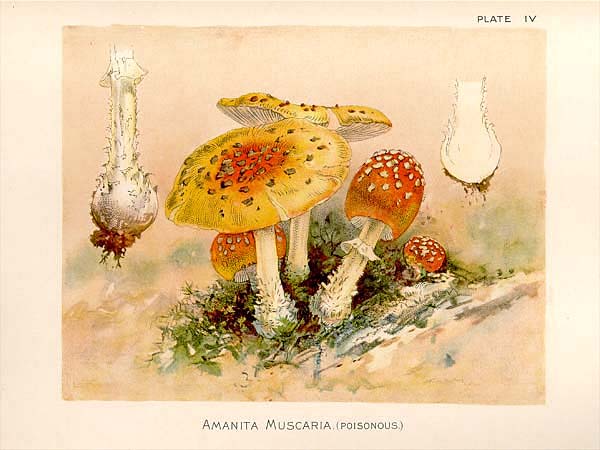
5.5
It is presumed that humans began gathering mushrooms for food in prehistoric times. In ancient civilizations such as the Greek, Roman, and Hindu, mushrooms were considered sacred foods. And based on data in the work of Fray Bernardino de Sahagún and fragments of the Popol Vuh and Chilam Balam, it is also believed that in pre-Hispanic Mesoamerican cultures, mushrooms acquired a high rank and came to be considered the food of gods and kings.

5.5

5.6
It is presumed that humans began gathering mushrooms for food in prehistoric times. In ancient civilizations such as the Greek, Roman, and Hindu, mushrooms were considered sacred foods. And based on data in the work of Fray Bernardino de Sahagún and fragments of the Popol Vuh and Chilam Balam, it is also believed that in pre-Hispanic Mesoamerican cultures, mushrooms acquired a high rank and came to be considered the food of gods and kings.

5.6
Ni apocalipsis ni paraÃso: Meditaciones en el umbral
Under the title Ni apocalipsis ni paraíso: Meditaciones en el umbral, Materia Abierta’s 2021 program is curated by Mônica Hoff and Eva Posas and will take place online from August 17 to September 18, 2021.
Materia Abierta is developed with the support from Universidad Nacional Autónoma de México (UNAM) in coordination with CulturaUNAM, Casa del Lago UNAM, the Programa de Arte, Ciencia y Tecnologías (ACT), and Cátedra Max Aub en arte y tecnología. This edition is possible thanks to the additional support from KADIST, NORO, PEANA, Museo Tamayo, and the Arts Department of the Universidad de Monterrey - UDEM.

4.1
Cordyceps species are parasites, mainly of insects and other arthropods (for this reason they are said to be entomopathogenic fungi). A few are parasites of other fungi. The best known species of the genus is Cordyceps sinensis which is the raw material of the "plant caterpillar", a prized ingredient in traditional Chinese medicine. As a biotechnical tool, cordyceps mushroom is a nootropic compound used for anti-aging, hormone regulation (specifically as a testosterone booster), and anti-fatigue agent.

4.1

4.2
Cordyceps species are parasites, mainly of insects and other arthropods (for this reason they are said to be entomopathogenic fungi). A few are parasites of other fungi. The best known species of the genus is Cordyceps sinensis which is the raw material of the "plant caterpillar", a prized ingredient in traditional Chinese medicine. As a biotechnical tool, cordyceps mushroom is a nootropic compound used for anti-aging, hormone regulation (specifically as a testosterone booster), and anti-fatigue agent.

4.2

4.3
Cordyceps species are parasites, mainly of insects and other arthropods (for this reason they are said to be entomopathogenic fungi). A few are parasites of other fungi. The best known species of the genus is Cordyceps sinensis which is the raw material of the "plant caterpillar", a prized ingredient in traditional Chinese medicine. As a biotechnical tool, cordyceps mushroom is a nootropic compound used for anti-aging, hormone regulation (specifically as a testosterone booster), and anti-fatigue agent.

4.3

4.4
Cordyceps species are parasites, mainly of insects and other arthropods (for this reason they are said to be entomopathogenic fungi). A few are parasites of other fungi. The best known species of the genus is Cordyceps sinensis which is the raw material of the "plant caterpillar", a prized ingredient in traditional Chinese medicine. As a biotechnical tool, cordyceps mushroom is a nootropic compound used for anti-aging, hormone regulation (specifically as a testosterone booster), and anti-fatigue agent.

4.4
Curatorial summary
No, the solution is not to believe the world will soon cease to exist, to sustain a fascination for its end, or trust there will always be a Prometheus to save us. Nor is the solution to bet on messianic narratives or prophecies of resistance, or to defend the maintenance of directed empathy or forgiveness in order to legitimize the place of sin — that is, of power. It is not the solution to believe in a new conquest of heaven on earth or a new earth in the heavens, or to wait for the red dragon, the leopard, or the scarlet beast. The solution is not that the only imaginary remaining is the post-Western one, and for paradise to be a construct outside of the physical nature of life, where fear of death is small in the face of fatigue, pain, and earthly disease. There has to be another way of being human and of diverse coexistence.
Many have been the attempts in recent decades to postpone the end of the world. The same can be said regarding the loss of the future — not only of its occurrence but also of its representation. As a consequence, never before have so many different versions of the future been designed at once, exhausting their link with reality and possible existence. As a project of condemnation or salvation, the idea of the future is intertwined with a linearity of time defined by epistemologies and colonial narratives of conquest, dispossession, and domination. Therefore, the concepts created to name it are not only endless but insufficient, given that beyond the end of the future as the end of the world, what we are really facing is the exhaustion of a civilizing project built in the order of reason. The future is also a rhetorical opportunity, or one more excuse, to erase ourselves from our present and forget the debts we have with the past. So no, the solution is not to try to redeem the future, nor to condemn it.
By revisiting the poem “Meditación en el umbral” by Rosario Castellanos, the second edition of Materia Abierta proposes an exercise of inflection that focuses on less linear paths and forms of consciousness, thought, and creation. The intention is to work from experiences and knowledge that, in their divergence from linearity, build diversity and thus a way of coexisting that enables us not only to imagine but also to foster other socio-ecosystems. Just as memory-processing oracles that deregulate the normative notion of time, dreams, embodied knowledge, life that develops under the earth and its diverse biotechnological toxicity, poetry and political healing practices announce themselves as ways of constructing other presents and of existing beyond an Edenic simulacrum and the consecrated ways of life that guarantee a future from which it is necessary to escape.
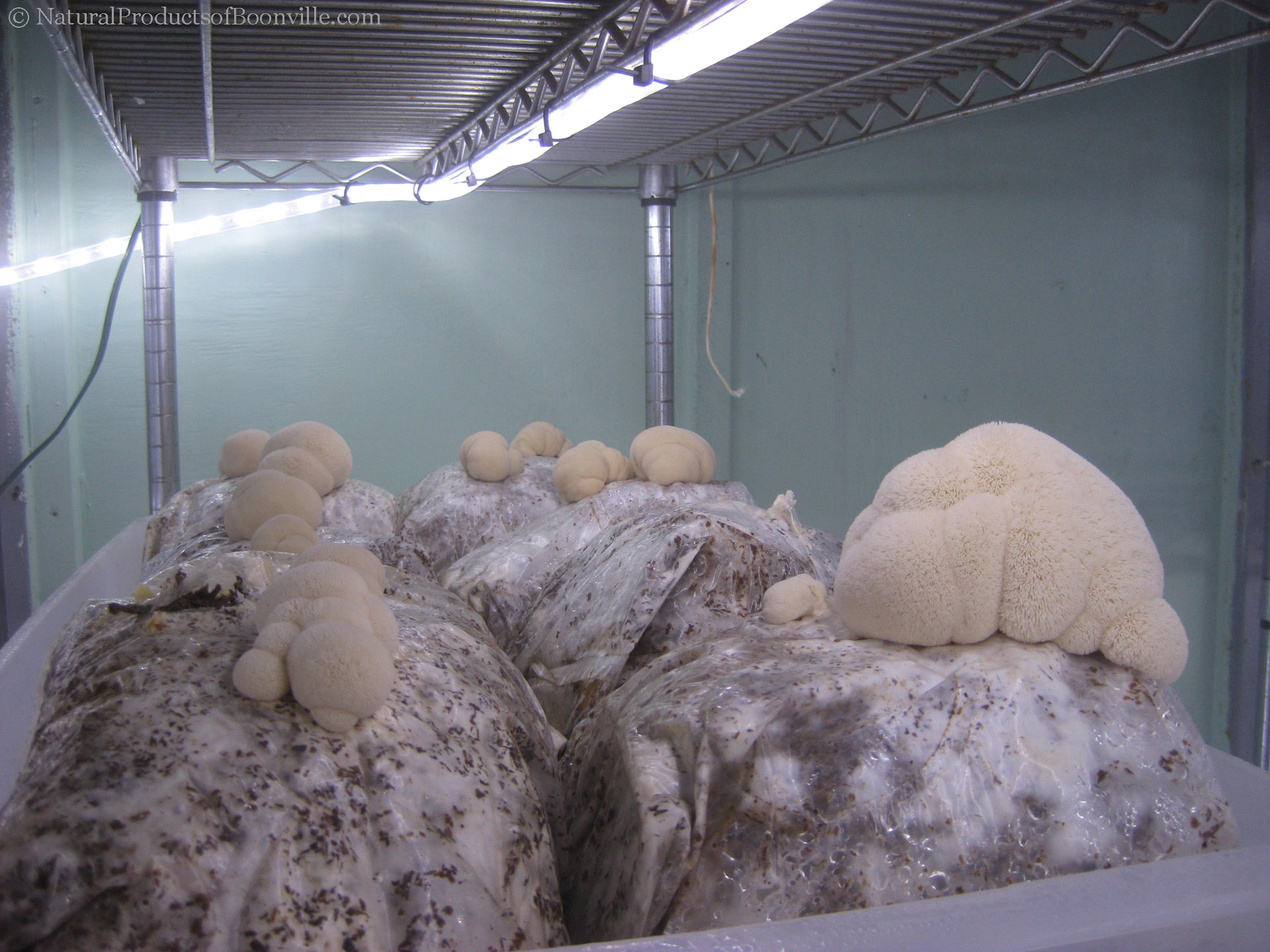
7.1
Hericium erinaceus or Lion's Mane is a culinary treat, extremely versatile in the kitchen. Many people find Lion's Mane mushroom to be a good imitator of lobster, fried in a pan and dipped in melted butter. Lion's Mane mushroom is also said to have medicinal properties, and thought to increase cognitive abilities by initiating nerve growth and regeneration. It can be found in health stores.

7.1

7.2
Hericium erinaceus or Lion's Mane is a culinary treat, extremely versatile in the kitchen. Many people find Lion's Mane mushroom to be a good imitator of lobster, fried in a pan and dipped in melted butter. Lion's Mane mushroom is also said to have medicinal properties, and thought to increase cognitive abilities by initiating nerve growth and regeneration. It can be found in health stores.

7.2

7.3
Hericium erinaceus or Lion's Mane is a culinary treat, extremely versatile in the kitchen. Many people find Lion's Mane mushroom to be a good imitator of lobster, fried in a pan and dipped in melted butter. Lion's Mane mushroom is also said to have medicinal properties, and thought to increase cognitive abilities by initiating nerve growth and regeneration. It can be found in health stores.

7.3
Faculty
Brigitte Baptiste
María Buenaventura
Dawn Chan
Verónica Gago
Juan López Intzín
Maximiliano Mamani
Luciana Parisi
JD Pluecker
Sidarta Ribeiro
The Sensing Salon (Valentina Desideri and Denise Ferreira da Silva)
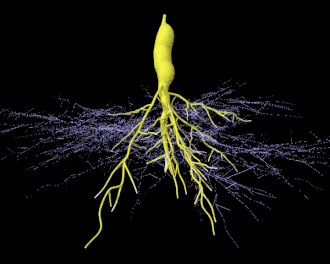
8.1
Arbuscular mycorrhizas are characterized by the formation of unique structures, arbuscules and vesicles by fungi of the phylum Glomeromycota. AM fungi help plants to capture nutrients such as phosphorus, sulfur, nitrogen and micronutrients from the soil. It is believed that the development of the arbuscular mycorrhizal symbiosis played a crucial role in the initial colonisation of land by plants and in the evolution of the vascular plants.

8.1

8.2
Arbuscular mycorrhizas are characterized by the formation of unique structures, arbuscules and vesicles by fungi of the phylum Glomeromycota. AM fungi help plants to capture nutrients such as phosphorus, sulfur, nitrogen and micronutrients from the soil. It is believed that the development of the arbuscular mycorrhizal symbiosis played a crucial role in the initial colonisation of land by plants and in the evolution of the vascular plants.

8.2
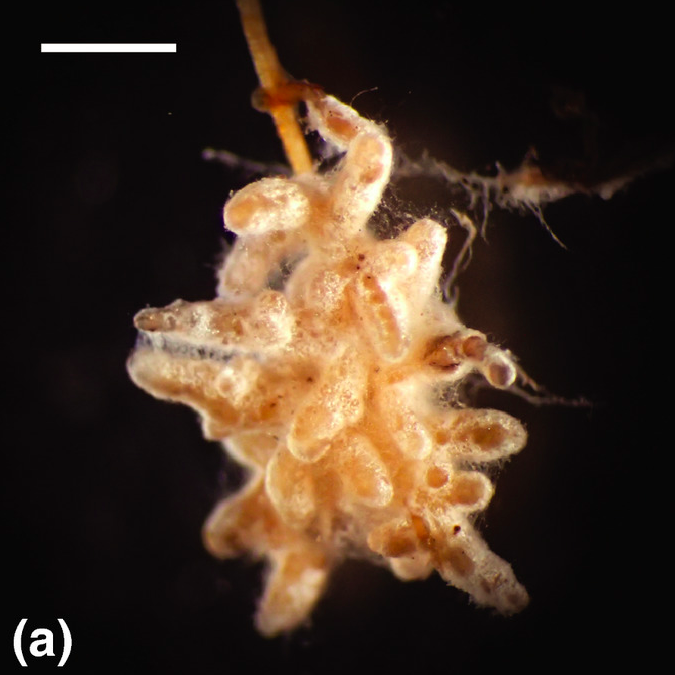
8.3
Arbuscular mycorrhizas are characterized by the formation of unique structures, arbuscules and vesicles by fungi of the phylum Glomeromycota. AM fungi help plants to capture nutrients such as phosphorus, sulfur, nitrogen and micronutrients from the soil. It is believed that the development of the arbuscular mycorrhizal symbiosis played a crucial role in the initial colonisation of land by plants and in the evolution of the vascular plants.

8.3
Participants
Materia Abierta invites applications from artists, authors, and researchers working within any discipline, based anywhere in the world. An academic degree is not a prerequisite.
A group of twenty-five people will be selected to participate through the open call. A limited number of spaces will be awarded directly through institutional invitations. Offering the program virtually and free of charge presents a special opportunity to approach distant realities. The intention is to form a diverse, critical, and politically active group of participants who seek to interrogate the hegemonic systems through which dominant culture and knowledge are produced.
Activities are conducted in Spanish and English, without simultaneous translation. Knowledge of both languages is strongly recommended.

17.1
“Sir -- Could you kindly help us identify the fungus/fungi growing in our flower bed? What we first thought was our dog's -- well, to put it bluntly-- vomit seems to be some kind of living, thriving fungal entity. This patch of muted golden-colored "whatever" seems to thrive in the cypress mulch-filled, wooden-bordered landscaping.”

17.1
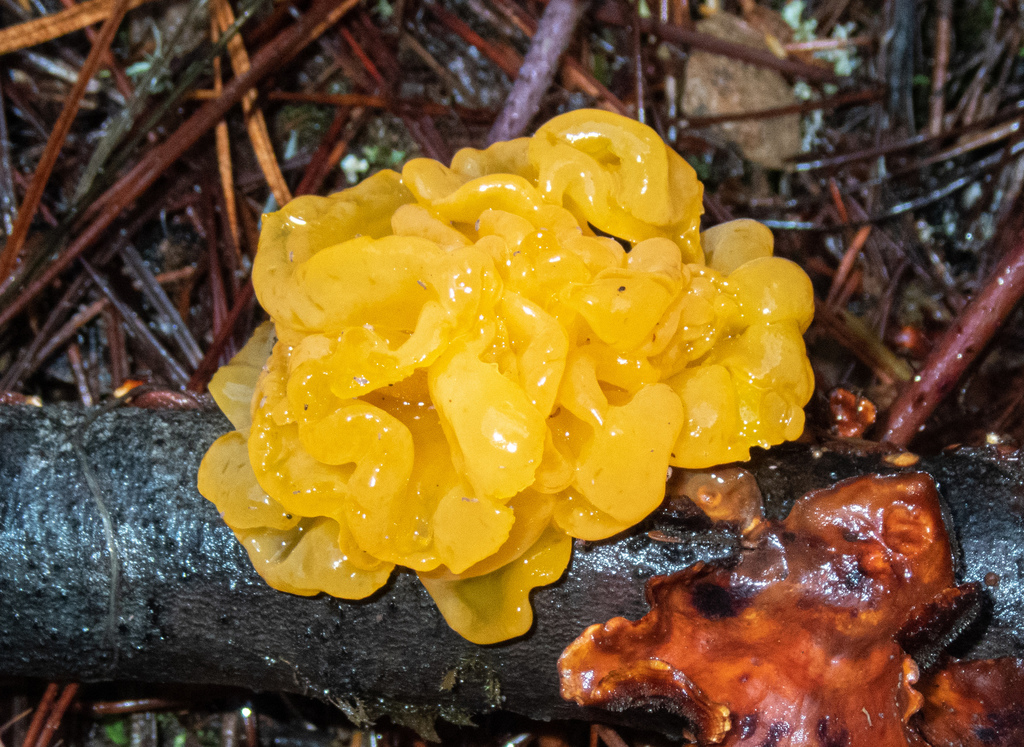
17.2
“Sir -- Could you kindly help us identify the fungus/fungi growing in our flower bed? What we first thought was our dog's -- well, to put it bluntly-- vomit seems to be some kind of living, thriving fungal entity. This patch of muted golden-colored "whatever" seems to thrive in the cypress mulch-filled, wooden-bordered landscaping.”

17.2
Calendar
Over the course of five weeks, the 2021 edition is configured in different time frames to address the proposed topics with the urgency that this historical moment requires — while seeking not to demand too much screen time from the people who participate. The expected time requirement is approximately three hours per day, Tuesday through Saturday.
Activities will include public lectures and performances, reading seminars, group discussion sessions, individual counseling, and a cross-sectional experimental writing workshop. All events will be organized in Mexico City time (CST).
Download a PDF with the public program here.
Week 1
Tuesday, August 17
Group welcome, 10:30 a.m. – 11 a.m.
Workshop: The Sensing Salon, 11 a.m. – 2 p.m.
Wednesday, August 18, 11 a.m. – 2 p.m.
Workshop: The Sensing Salon
Thursday, August 19, 11 a.m. – 2 p.m.
Workshop: The Sensing Salon
Week 2
Tuesday, August 24, 11 a.m. – 2 p.m.
Seminar: Sidarta Ribeiro
Wednesday, August 25, 11 a.m. – 2 p.m.
Seminar: Sidarta Ribeiro
Thursday, August 26, 11 a.m. – 2 p.m.
Public lecture + discussion: Juan López Intzín
Friday, August 27, 11 a.m. – 2 p.m.
Mentoring session: Mônica Hoff and Eva Posas
Saturday, August 28, 11 a.m. – 2 p.m.
Workshop: JD Pluecker
Week 3
Tuesday, August 31, 11 a.m. – 2 p.m.
Public lecture + discussion: Dawn Chan
Tuesday, August 17
Group welcome, 10:30 a.m. – 11 a.m.
Workshop: The Sensing Salon, 11 a.m. – 2 p.m.
Wednesday, August 18, 11 a.m. – 2 p.m.
Workshop: The Sensing Salon
Thursday, August 19, 11 a.m. – 2 p.m.
Workshop: The Sensing Salon
Week 2
Tuesday, August 24, 11 a.m. – 2 p.m.
Seminar: Sidarta Ribeiro
Wednesday, August 25, 11 a.m. – 2 p.m.
Seminar: Sidarta Ribeiro
Thursday, August 26, 11 a.m. – 2 p.m.
Public lecture + discussion: Juan López Intzín
Friday, August 27, 11 a.m. – 2 p.m.
Mentoring session: Mônica Hoff and Eva Posas
Saturday, August 28, 11 a.m. – 2 p.m.
Workshop: JD Pluecker
Week 3
Tuesday, August 31, 11 a.m. – 2 p.m.
Public lecture + discussion: Dawn Chan
Wednesday, September 1, 11 a.m. – 2 p.m.
Mentoring session: Mônica Hoff and Eva Posas
Friday, September 3, 11 a.m. – 2 p.m.
Public performative gathering: María Buenaventura
Public performative gathering: María Buenaventura
Saturday, September 4, 11 a.m. – 2 p.m.
Workshop: JD Pluecker
Week 4
Workshop: JD Pluecker
Week 4
Tuesday, September 7, 11 a.m. – 2 p.m.
Mentoring session: Mônica Hoff and Eva Posas
Wednesday, September 8, 11 a.m. – 2 p.m.
Seminar: Brigitte Baptiste
Thursday, September 9, 11 a.m. – 2 p.m.
Public performative gathering: Maximiliano Mamani
Friday, September 10, 10 a.m. – 1 p.m.
Seminar: Luciana Parisi
Saturday, September 11, 11 a.m. – 2 p.m.
Workshop: JD Pluecker
Week 5
Wednesday, September 15
Seminar: Verónica Gago, 11 a.m. – 2 p.m.
Public lecture + discussion: Luciana Parisi, 3 p.m. – 4:15 p.m.
Seminar: Brigitte Baptiste
Thursday, September 9, 11 a.m. – 2 p.m.
Public performative gathering: Maximiliano Mamani
Friday, September 10, 10 a.m. – 1 p.m.
Seminar: Luciana Parisi
Saturday, September 11, 11 a.m. – 2 p.m.
Workshop: JD Pluecker
Week 5
Wednesday, September 15
Seminar: Verónica Gago, 11 a.m. – 2 p.m.
Public lecture + discussion: Luciana Parisi, 3 p.m. – 4:15 p.m.
Thursday, September 16, 11 a.m. – 2 p.m.
Seminar: Verónica Gago
Friday, September 17, 11 a.m. – 2 p.m.
Public lecture + seminar: Verónica Gago
Saturday, September 18, 11 a.m. – 2 p.m.
Group farewell
Seminar: Verónica Gago
Friday, September 17, 11 a.m. – 2 p.m.
Public lecture + seminar: Verónica Gago
Saturday, September 18, 11 a.m. – 2 p.m.
Group farewell
(Dates and times are subject to change. Please return to this website for updates to our calendar.)

1.1
Beauveria bassiana is a fungus that grows naturally in soils throughout the world and acts as a parasite on various arthropod species, causing white muscardine disease; it thus belongs to the entomopathogenic fungi. It is being used as a biological insecticide to control a number of pests such as termites, thrips, whiteflies, aphids and different beetles. Its use in the control of bedbugs and malaria-transmitting mosquitos is under investigation.

1.1

1.2
Beauveria bassiana is a fungus that grows naturally in soils throughout the world and acts as a parasite on various arthropod species, causing white muscardine disease; it thus belongs to the entomopathogenic fungi. It is being used as a biological insecticide to control a number of pests such as termites, thrips, whiteflies, aphids and different beetles. Its use in the control of bedbugs and malaria-transmitting mosquitos is under investigation.

1.2

1.3
Beauveria bassiana is a fungus that grows naturally in soils throughout the world and acts as a parasite on various arthropod species, causing white muscardine disease; it thus belongs to the entomopathogenic fungi. It is being used as a biological insecticide to control a number of pests such as termites, thrips, whiteflies, aphids and different beetles. Its use in the control of bedbugs and malaria-transmitting mosquitos is under investigation.

1.3
Applications
Applications will be accepted until July 13, 2021. To apply please refer to this online form, where in addition to your response to questions, the following materials are requested:
- Resume or short bio (1 page)
- Statement of interest (~500 words)
- 5 – 10 work samples
Work samples should be recent and can include images and texts as well as links to websites, videos, and/or audio-based works.
Any questions regarding the application process may be sent to info@materiaabierta.com, with the subject “Application 2021.”

18.1
Phallus indusiatus produces a sticky spore mass that has a sharp, sickly-sweet odor of carrion. The cloying stink of mature fruit bodies—detectable from a considerable distance—is attractive to certain insects. Species recorded visiting the fungus include stingless bees of the genus Trigona, and flies of the families Drosophilidae and Muscidae. Insects assist in spore dispersal by consuming the gleba and depositing excrement containing intact spores to germinate elsewhere.

18.1
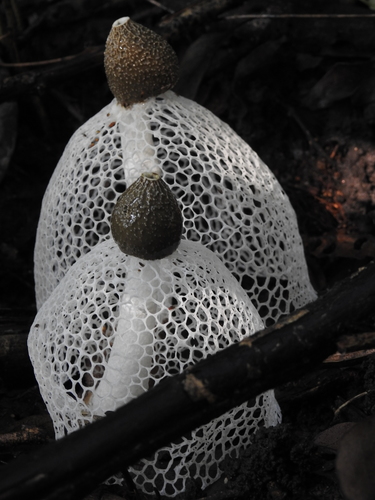
18.2
Phallus indusiatus produces a sticky spore mass that has a sharp, sickly-sweet odor of carrion. The cloying stink of mature fruit bodies—detectable from a considerable distance—is attractive to certain insects. Species recorded visiting the fungus include stingless bees of the genus Trigona, and flies of the families Drosophilidae and Muscidae. Insects assist in spore dispersal by consuming the gleba and depositing excrement containing intact spores to germinate elsewhere.

18.2
Credits
Federico Pérez Villoro
Founder and director
Mônica Hoff and Eva Posas
Curators of the 2021 edition
Ana Rivera
Participation coordinator
Eduardo Makoszay Mayén
Production coordinator
Natalia Zuluaga
Advisory board member
Cinthya García Leyva
Advisory board member
Isabel Zapata
Editor and proofreader (Spanish)
Design and programming
Ryan Diaz
Additional graphic design materials
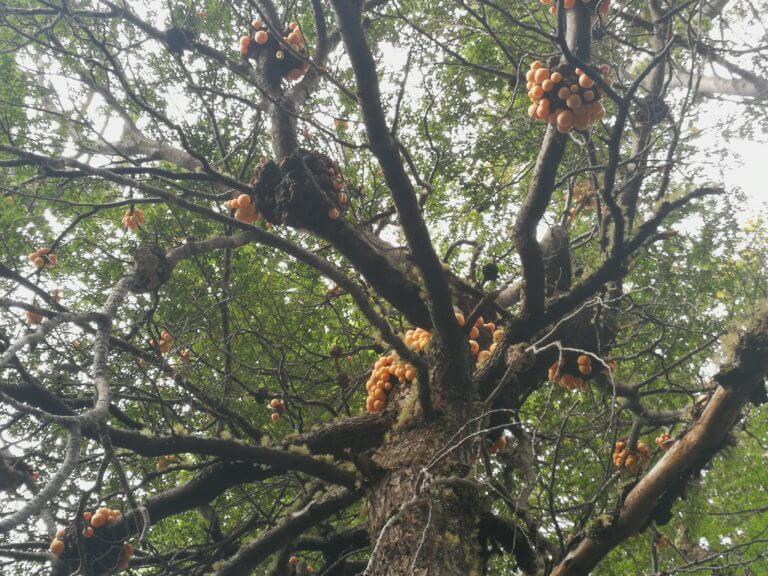
15.1
The Cyttaria were consumed by the native peoples that populated the territories where these fruits originate. Cyttaria darwinii and Cyttaria harioti were consumed fresh by the Fuegian or Yámanas Indians who inhabited the Beagle Channel as this species is rich in polysaccharides. It is currently used to make pickles. Cyttaria harioti was used by the Chilean Mapuche, who called the mushroom "llau-llau", to make an alcoholic drink or chicha (chicha = sour drink in Aztec). Cyttaria espinosae is currently consumed in large quantities in Chile in salads. Recent biomedical studies seem to have discovered certain components with anticancer properties against certain types of sarcoma, and lymphoma.

15.1

15.2
The Cyttaria were consumed by the native peoples that populated the territories where these fruits originate. Cyttaria darwinii and Cyttaria harioti were consumed fresh by the Fuegian or Yámanas Indians who inhabited the Beagle Channel as this species is rich in polysaccharides. It is currently used to make pickles. Cyttaria harioti was used by the Chilean Mapuche, who called the mushroom "llau-llau", to make an alcoholic drink or chicha (chicha = sour drink in Aztec). Cyttaria espinosae is currently consumed in large quantities in Chile in salads. Recent biomedical studies seem to have discovered certain components with anticancer properties against certain types of sarcoma, and lymphoma.

15.2
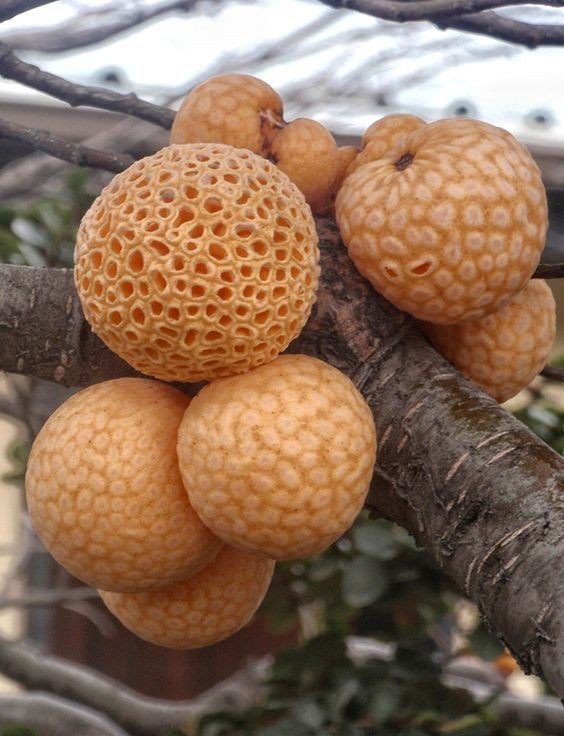
15.3
The Cyttaria were consumed by the native peoples that populated the territories where these fruits originate. Cyttaria darwinii and Cyttaria harioti were consumed fresh by the Fuegian or Yámanas Indians who inhabited the Beagle Channel as this species is rich in polysaccharides. It is currently used to make pickles. Cyttaria harioti was used by the Chilean Mapuche, who called the mushroom "llau-llau", to make an alcoholic drink or chicha (chicha = sour drink in Aztec). Cyttaria espinosae is currently consumed in large quantities in Chile in salads. Recent biomedical studies seem to have discovered certain components with anticancer properties against certain types of sarcoma, and lymphoma.

15.3
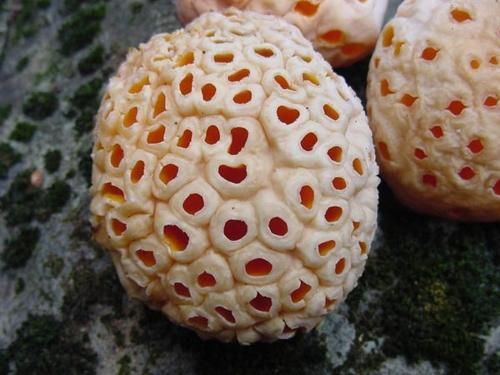
15.4
The Cyttaria were consumed by the native peoples that populated the territories where these fruits originate. Cyttaria darwinii and Cyttaria harioti were consumed fresh by the Fuegian or Yámanas Indians who inhabited the Beagle Channel as this species is rich in polysaccharides. It is currently used to make pickles. Cyttaria harioti was used by the Chilean Mapuche, who called the mushroom "llau-llau", to make an alcoholic drink or chicha (chicha = sour drink in Aztec). Cyttaria espinosae is currently consumed in large quantities in Chile in salads. Recent biomedical studies seem to have discovered certain components with anticancer properties against certain types of sarcoma, and lymphoma.

15.4
Contact
info@materiaabierta.com
Instagram: @materiaabierta
Twitter: @materiaabierta
Mailing list:

19.1
Under the name of Tibi, the original granules live in Opuntia ssp feeding on the sugary excretions (fruits) of these cacti. In Oaxaca, they are popularly known as seaweed or granillo, and are generally used domestically. Later, the granules of this culture, also known as cabaiasis, were named tibicos. Some sources call them Chinese mushrooms and others point to Japan as its origin. Reference is also made to Tibet, where the word tibicos would come from.

19.1

19.2
Under the name of Tibi, the original granules live in Opuntia ssp feeding on the sugary excretions (fruits) of these cacti. In Oaxaca, they are popularly known as seaweed or granillo, and are generally used domestically. Later, the granules of this culture, also known as cabaiasis, were named tibicos. Some sources call them Chinese mushrooms and others point to Japan as its origin. Reference is also made to Tibet, where the word tibicos would come from.

19.2
Bios
Curators
MÔNICA HOFF is an artist, curator, and researcher. Her work investigates the field of relations between curatorial, artistic, and educational practices and how they contribute, resist, and/or determine institutional politics and pedagogies. She holds a PhD in contemporary art process from the Universidade do Estado de Santa Catarina in Brazil. Between 2006 and 2014, Mônica coordinated the education department of the Bienal del Mercosul in Porto Alegre, where she also acted as part of the curatorial team for its ninth edition, Weather Permitting, in 2013. Recent projects include: Laboratório de Curadoria, Arte e Educação (2014 – 19), in collaboration with Fernanda Albuquerque; Embarcação (2016 – 18) and Escola Extraordinária, both co-directed with Kamilla Nunes in Florianópolis, Brazil; and Corazón Pulmones Hígado (2019 – 20), co-commissioned with Andrea Pacheco at Matadero Madrid. She is currently developing Pedagogia em Público with Fabio Tremonte; coordinating a study group on collectivity, learning, and other forms of institutions with Jessica Gogan; and serving as a guest researcher for the Escuela Desnuda, from Miguel Braceli. She has published the books Pedagogia no campo expandido, with Pablo Helguera, in 2011; Manual para curiosos and the anthology La Nube, with Sofía Hernandez Chong Cuy, in 2013; and in 2018, together with Regina Melim, the Portuguese translation of Tijuana Maid, a novel edited by Martha Rosler in the 1970s.
EVA POSAS is a curator. Working across curatorial and editorial boundaries, she’s interested in the immateriality of language, Zapotec culture, identity, and memory as a form of production. In past projects she has investigated publishing as an articulation of social complexities; storytelling as a form of curating; the connection between public and private spaces; and the politics of subtleness as a subversive methodology through books, exhibitions, and public art projects. She is currently a curator-in-residence at Jan Van Eyck Academie (2020 – 2021).
Faculty
BRIGITTE BAPTISTE is a Colombian biologist who insists that cultural diversity is an expression of nature’s diversity. She has an Honoris Causa PhD in environmental management from the Instituto Universitario de la Paz and is an expert in environmental issues and biodiversity. She was director of the Instituto de Investigación de Recursos Biológicos Alexander von Humboldt and is currently president of the Universidad Ean, in Bogotá. She graduated from the Universidad Javeriana de Colombia, holds a master's degree in tropical conservation and development from the University of Florida, and completed additional graduate studies in environmental science at the Universidad Autónoma de Barcelona. She currently chairs the Science Policy Advisory Committee of the Inter-American Environmental Initiative for Global Change, is a member of the scientific committee of the global program Ecosystem Change and Society, and is part of the Commission on Ecosystem of the International Union for Conservation of Nature. Brigitte is a charismatic speaker, a transgender woman, and an LGBTQI activist. She is married to Adriana Vásquez, with whom she has two daughters: Candelaria and Juana Pasión.
MARÍA BUENAVENUTRA is an artist and cook based in the Bogotá savanna. Her artistic process starts from an ecstasy for the diversity of life as she commits to searching for a free and exuberant way of life for all beings with whom she shares space, breath and food. Her work centers on ideas around territory, small land ownership, and the dietary history of the Tropical Andes: a place of tensions and dispossession buried in the daily struggle of a country of displacement and informality and behind the veil of media outlets which themselves depend on centralized power.
DAWN CHAN is a New York-based writer and editor whose work has been published in the Atlantic, Bookforum, the New York Times, the New Yorker, the Paris Review, and the Village Voice, among other publications. She also frequently contributes to Artforum, where she worked as an editor from 2007 to 2018. Currently on the faculty at CCS Bard, Dawn has lectured at the School of the Art Institute of Chicago, Rhode Island School of Design, and New York University. Anthologized in volumes from Whitechapel/MIT Press, Paper Monument, and Museum der Moderne Salzburg, her writing has also been recognized with a Thoma Foundation art writing award in digital art and a Warhol Arts Writers Grant. In 2019 – 20, Chan was on the curatorial team that organized Phantom Plane: Cyberpunk in the Year of the Future at Tai Kwun’s JC Contemporary in Hong Kong.
VERÓNICA GAGO holds a doctorate in social sciences from the Universidad de Buenos Aires. She is a graduate and postgraduate professor at the Universidad Nacional de San Martín and the Universidad de Buenos Aires and is a researcher at the Consejo Nacional de Investigaciones Científicas y Técnicas (CONICET) of Argentina. She coordinates the Grupo de Investigación e Intervención Feminista (GIIF) and the CLACSO working group dedicated to popular economies. She is the author of the books La razón neoliberal: Economías barrocas y pragmática popular (Tinta Limón, 2014), later published in Spain, the United States, Brazil, Bolivia, and France, and La potencia feminista: O el deseo de cambiarlo todo (Tinta Limón, 2019), later published in Spain, the United States, Brazil, Peru, Germany, and France. She is also the co-author (with Luci Cavallero) of Una lectura feminista de la deuda (2019), also published in Brazil, Italy, and Great Britain. She is the editor of various collective volumes, including: 8M: Constelación Feminista and La Internacional Feminista, as well as the author of texts on neoliberalism, feminism, and extractivism.
JUAN LÓPEZ INTZÍN is a Mayan speaker of the Tseltal language (Tenejapa, Chiapas). He has a degree in sociology from the Universidad Autónoma de Chiapas and a master’s degree in social anthropology from the Universidad Iberoamericana in Mexico City. In 2003 he was part of the team that translated the Acuerdos de San Andrés into the Mayan-Tseltal language, edited by CELALI-CONECULTA. His recent publications include “El Ch’ulel multiverso e intersubjetividad en el stalel Maya Tseltal,” included in Lengua, cosmovisión, intersubjetividad: Acercamientos a la obra de Carlos Lenkersdorf, published by UNAM in 2015. He is co-author of the books Sentipensar el género: Perspectivas desde los pueblos originarios (Sjalel Kibeltik, 2013), Tejiendo nuestras raíces (2010), Ensayos: Memorial de los caminos: Palabras del corazón (CELALI, 2004), El sueño, ¿una herencia de nuestros primeros madres-padres? (CELALI, 2002), and Rumbo a la calle . . . El trabajo infantil, una estrategia de sobrevivencia (2000). He has lectured at New York University, University of Massachusetts, UNAM, and Universidad de Chile, among others. His main axis of reflection is what he has called epistemologies of the heart, where he explores Tseltal and Tsotsil concepts such as Ch’ulel, Ich’el ta muk ’, Lekil Kuxlejal, Stalel kuxlejal, and Sna’el k’inal. He currently works at the Centro de Derechos Humanos Fray Bartolomé de Las Casas.
MAXIMILIANO MAMANI is an Andean artist from Argentina, currently based in Tilcara, Jujuy. He is a dancer and teacher of folk dances. He studied anthropology at the Universidad Nacional de Salta and was a fellow of the National Fund for the Arts of Argentina, allowing him to gain artistic training in Mexico with the director Carlos Antunez. His artistic work is born from the criticism of the colonial matrix that governs our practices, aesthetics, and possibilities of imagining. He ventures into drag with his character "Bartolina Xixa," inspired by the revolutionary leader Bartolina Sisa and the cholas of La Paz. Through Bartolina Xixa, Mamani addresses LGTBQ constructions, coloniality, conceptions of gender and sexual diversity, environmental abuses, racism, violence against women, and the usurpation of territories in Latin America. Through her persona, he establishes a dialogue with his reality and builds a body of work that is part of his own experiences. He is currently working as a butcher in the town of Tilcara.
LUCIANA PARISI researches the intersection of continental philosophy, information sciences, digital media, and computational technologies. Her writings investigate technology in terms of ontological and epistemological possibilities of transformation in culture, aesthetics, and politics. She was a member of the CCRU (Cybernetic Culture Research Unit) and is currently a co-founding member of CCB (Critical Computation Bureau), through which she co-ideated the Symposium on Recursive Colonialism, Artificial Intelligence, and Speculative Computation (2020). In 2004 she published Abstract Sex: Philosophy, Biotechnology, and the Mutations of Desire, which investigates capitalist experimentations in molecular strata of nature and conceptions of sex and gender in terms of bacterial sex. Her book Contagious Architecture: Computation, Aesthetics, and Space (2013) explores algorithms in architecture and interaction design. Her current project, Automating Philosophy (forthcoming), explores radical critiques starting with inhuman intelligence and cosmocomputations.
JD PLUECKER works with language, writes, translates, organizes, interprets, and creates. In 2010, they co-founded the transdisciplinary collaborative Antena Aire and in 2015 the local social justice interpreting collective Antena Houston. JD’s undisciplinary work is informed by experimental poetics, language justice, radical aesthetics / politics, and cross-border / cross-language cultural production. They have translated numerous books from the Spanish, including most recently Gore Capitalism by Sayak Valencia (Semiotext(e), 2018) and Antígona González by Sara Uribe (Les Figues Press, 2016). Their book of poetry and image, Ford Over, was released in 2016 from Noemi Press. JD is a member of the Macondo Writing Workshop and has exhibited work at Blaffer Art Museum, the Hammer Museum, Project Row Houses, and more.
SIDARTA RIBEIRO is a professor of neurosciences and deputy director of the Instituto do Cérebro of the Universidade Federal de Rio Grande do Norte, Brazil. He holds a degree in biology from the Universidade de Brasilia (1993), a master's degree in biophysics from the Universidade Federal de Río de Janeiro (1994), a PhD in animal behavior from Rockefeller University (2000), and a post-doctorate in neurophysiology from Duke University (2005). He has a background in neuroethology, molecular neurobiology, and systems neurophysiology, with an interest in the following topics: memory, sleep, and dreams; neuronal plasticity; vocal communication; symbolic competence in nonhuman animals; computer psychiatry; neuroeducation; psychedelics and drug policy. He is currently director of the Sociedad Brasileña para el Avance de la Ciencia, 2018 – 21. From 2009 to 2011 he served as secretary of the Sociedad Brasileña de Neurociencias y Comportamiento, and between 2011 and 2015 as coordinator of the Brazilian committee of the Pew Latin American Fellows Program in Biomedical Sciences. Since 2011 he has been a member of the steering committee of the Latin American School for Education, Cognitive, and Neural Sciences (LA School). He is a senior associate researcher at Centro de Investigación de Innovación y Difusión en Neuromatemática de la FAPESP; scientific coordinator of the Plataforma Brasileña de Políticas de Drogas, and member of the advisory council of the Instituto Chacruna de Plantas Medicinales Psicodélicas.
THE SENSING SALON is the collaborative practice of Valentina Desideri and Denise Ferreira da Silva.
DENISE FERREIRA DA SILVA is a philosopher, writer, and filmmaker. Her academic and artistic works address the ethico-political challenges of the global present. She is the author of Toward a Global Idea of Race (2007), A Divida Impagavel (2019), and Unpayable Debt (2021) and co-editor (with Paula Chakravartty) of Race, Empire, and the Crisis of the Subprime (2013). Her artistic work includes the films Serpent Rain (2016) and 4Waters-Deep Implicancy (2018), in collaboration with Arjuna Neuman; and the relational art practices Poethical Readings and The Sensing Salon, in collaboration with Valentina Desideri. She lives and works on the traditional, ancestral, and unceded territory of the Musqueam (xwməθkwəy̓ əm) people.
VALENTINA DESIDERI explores art making as a form of study and study as a form of making art. She trained in contemporary dance at the Laban Centre in London (2003 – 2006), later earned her MA in fine arts at the Sandberg Institute in Amsterdam (2011 – 13), and is currently a PhD candidate at the Social Justice Institute at the University of British Columbia, Vancouver. She does Fake Therapy and Political Therapy, and is one of the co-organizers of Performing Arts Forum in France. She speculates in writing with Stefano Harney, she participates in Poethical Readings and organizes The Sensing Salon with Denise Ferreira da Silva, she is part of the Oficina de Imaginação Política, and she reads and writes.
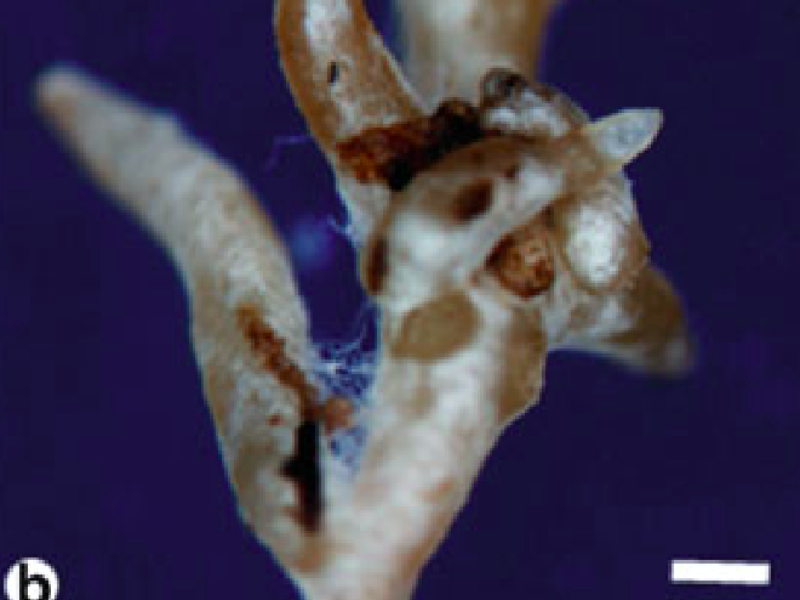
9.1
Attempts to grow edible mycorrhizal mushrooms (EMMs) commenced on the Périgord black truffle (Tuber melanosporum) in France and in Italy by transplanting truffle-colonised seedlings raised in forest nurseries. This technique has been extensively used in the establishment of truffière in European countries and also in Asian and Oceanic countries. Mycorrhizal seedlings of Pinus yunnanensis and P. armandii colonised by matsutake (Tricholoma matsutake) are outplanted into the matsutake-producing forests in southwest China aiming to increase mushroom production.

9.1
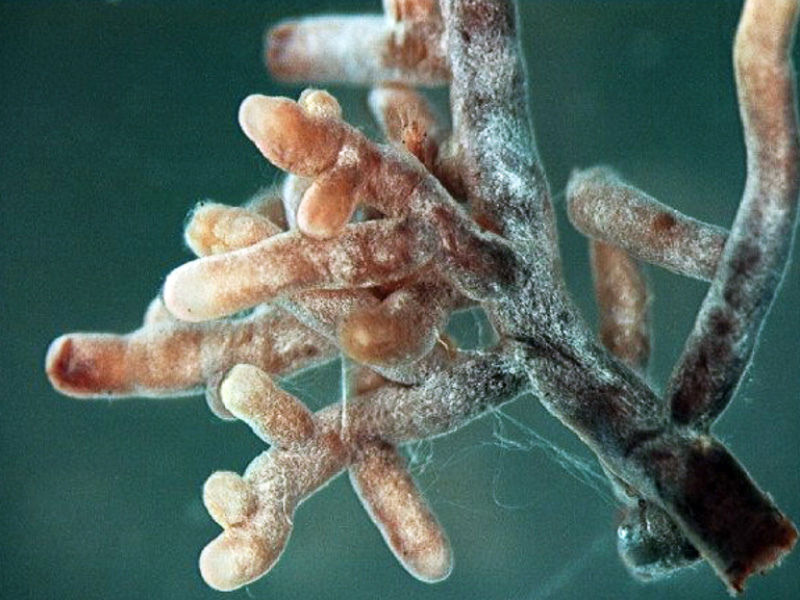
9.2
Attempts to grow edible mycorrhizal mushrooms (EMMs) commenced on the Périgord black truffle (Tuber melanosporum) in France and in Italy by transplanting truffle-colonised seedlings raised in forest nurseries. This technique has been extensively used in the establishment of truffière in European countries and also in Asian and Oceanic countries. Mycorrhizal seedlings of Pinus yunnanensis and P. armandii colonised by matsutake (Tricholoma matsutake) are outplanted into the matsutake-producing forests in southwest China aiming to increase mushroom production.

9.2
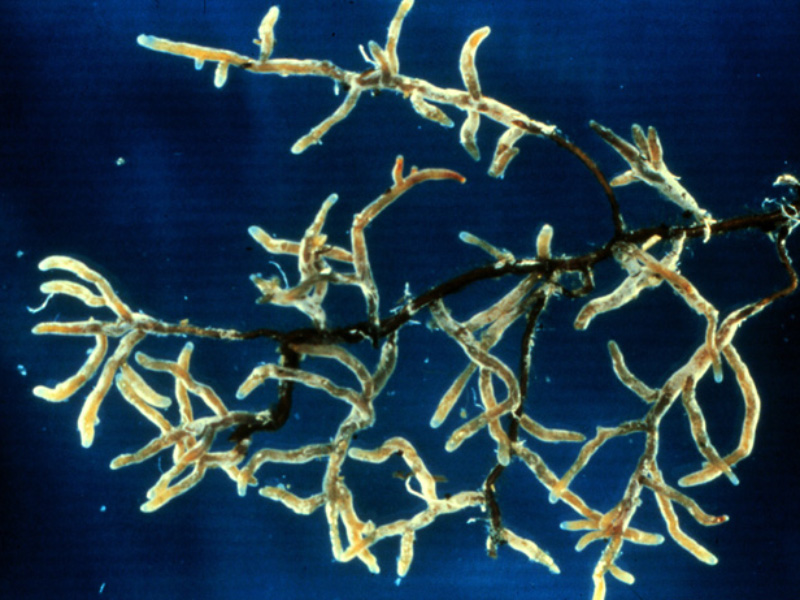
9.3
Attempts to grow edible mycorrhizal mushrooms (EMMs) commenced on the Périgord black truffle (Tuber melanosporum) in France and in Italy by transplanting truffle-colonised seedlings raised in forest nurseries. This technique has been extensively used in the establishment of truffière in European countries and also in Asian and Oceanic countries. Mycorrhizal seedlings of Pinus yunnanensis and P. armandii colonised by matsutake (Tricholoma matsutake) are outplanted into the matsutake-producing forests in southwest China aiming to increase mushroom production.

9.3
 2019
2019